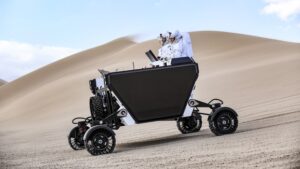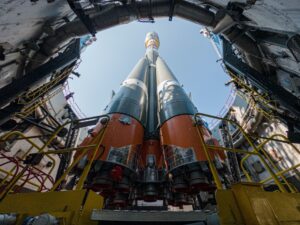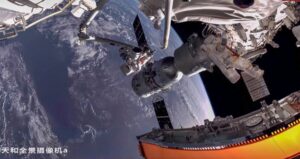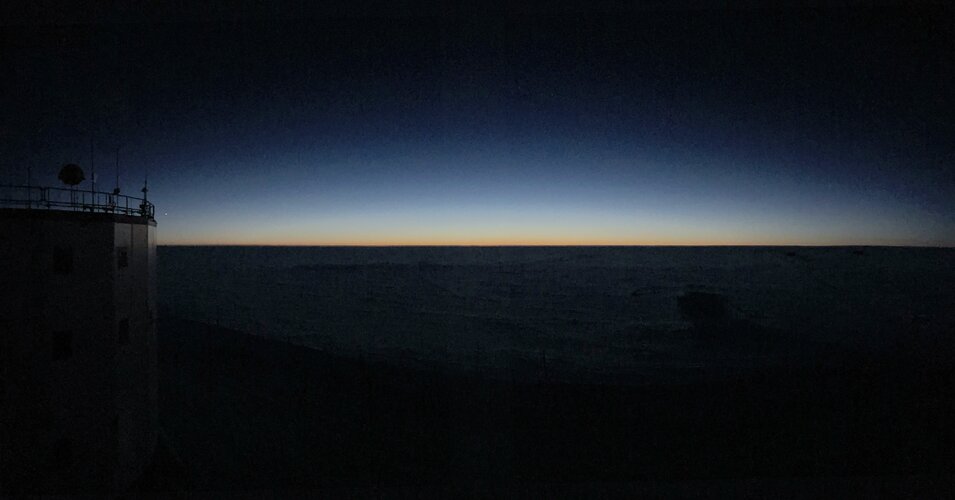Esri releases updated land-cover map with new sets of global data
Friday, 11 March 2022 01:16 Governments and businesses across the world are pledging to adopt more sustainable and equitable practices. Many are also working to limit activities that contribute to climate change. To support these efforts, Esri, the global leader in location intelligence, in partnership with Impact Observatory and Microsoft, is releasing a globally consistent 2017-2021 global land-use and land-cover map of
Governments and businesses across the world are pledging to adopt more sustainable and equitable practices. Many are also working to limit activities that contribute to climate change. To support these efforts, Esri, the global leader in location intelligence, in partnership with Impact Observatory and Microsoft, is releasing a globally consistent 2017-2021 global land-use and land-cover map of Sol 3411: Bonanza
Friday, 11 March 2022 01:16 After significant churn in Monday's planning, today turned out to be a single sol's worth of untargeted science. That left GEO with only a ChemCam AEGIS activity, where ChemCam automatically identifies and targets an interesting rock near the rover by itself. ENV than planned a bonanza of atmospheric monitoring activities, as we had power to spare.
This included 7 dust devil movies with 4
After significant churn in Monday's planning, today turned out to be a single sol's worth of untargeted science. That left GEO with only a ChemCam AEGIS activity, where ChemCam automatically identifies and targets an interesting rock near the rover by itself. ENV than planned a bonanza of atmospheric monitoring activities, as we had power to spare.
This included 7 dust devil movies with 4 The start of the birth of planets in a binary star system observed
Friday, 11 March 2022 01:16 Astronomers have observed primordial material that may be giving birth to three planetary systems around a binary star in unprecedented detail.
Bringing together three decades of study, an international group of scientists have observed a pair of stars orbiting each other, to reveal that these stars are surrounded by disks of gas and dust. Research published in The Astrophysical Journal, s
Astronomers have observed primordial material that may be giving birth to three planetary systems around a binary star in unprecedented detail.
Bringing together three decades of study, an international group of scientists have observed a pair of stars orbiting each other, to reveal that these stars are surrounded by disks of gas and dust. Research published in The Astrophysical Journal, s Cosmic particle accelerator at its limit
Friday, 11 March 2022 01:16 With the help of special telescopes, researchers have observed a cosmic particle accelerator as never before. Observations made with the gamma ray observatory H.E.S.S. in Namibia show for the first time the course of an acceleration process in a stellar process called a nova, which comprises powerful eruptions on the surface of a white dwarf.
A nova creates a shock wave that tears through
With the help of special telescopes, researchers have observed a cosmic particle accelerator as never before. Observations made with the gamma ray observatory H.E.S.S. in Namibia show for the first time the course of an acceleration process in a stellar process called a nova, which comprises powerful eruptions on the surface of a white dwarf.
A nova creates a shock wave that tears through Astrolab unveils Artemis lunar rover design
Thursday, 10 March 2022 22:36
A California startup has developed and tested a prototype of a lunar rover that it plans to offer to NASA for use on future Artemis missions.
The post Astrolab unveils Artemis lunar rover design appeared first on SpaceNews.
Soyuz embargo strands satellites with limited launch options
Thursday, 10 March 2022 20:36
More than a dozen former Soyuz satellite missions need new rides after Russia’s invasion of Ukraine, raising questions over how fast the launch market can absorb the loss of the workhorse rocket.
The post Soyuz embargo strands satellites with limited launch options appeared first on SpaceNews.
Exploring the Rubin Observatory's giant data acquisition system
Thursday, 10 March 2022 20:02
When the Vera C. Rubin Observatory starts taking pictures of the night sky in a few years, its centerpiece 3,200 megapixel Legacy Survey of Space and Time camera will produce an enormous trove of data valuable to everyone from cosmologists to the people who track asteroids that might collide with Earth.
You may already have read about how the Rubin Observatory's Simonyi Survey Telescope will gather light from the universe and shine it on the Department of Energy's LSST Camera, how researchers will manage the data that comes from the camera, and the myriad things they'll try to learn about the universe around us.
What you probably haven't read about is how researchers will get that mountain of incredibly detailed images off the back of the world's largest digital camera, down fiber optic cables and into the computers that will send them off Cerro Pachón in Chile and out into the world.
Gregg Thayer, a scientist at the U.S. Department of Energy's SLAC National Accelerator Laboratory, is the person in charge of Rubin's data acquisition system, which handles this essential process.
Imagining an Earthly neighbor
Thursday, 10 March 2022 14:00
We do not yet know whether the sun-like stars closest to us, the α Centauri A/B binary, harbor an Earth-like planet. However, thanks to new modeling work, we now have a good sense of what such a planet, should it exist, would look like and how it might have evolved.
These are exciting times for exoplanet research, moving from demography towards detailed characterization. The James Webb Space Telescope (JWST), successfully launched in December 2021, is projected to detect the atmospheres of rocky exoplanets transiting in front of M dwarfs—stars that are fainter than the sun—orbiting within the habitable zone. The Extremely Large Telescope (ELT), currently under construction in Chile, will be set up to directly image rocky exoplanets around nearby sun-like stars by the end of the decade. Looking even further ahead, ambitious future space mission concepts are currently being explored, including the Large Interferometer for Exoplanets (LIFE), which targets habitable-zone rocky exoplanets and their atmospheres.
ETH Zurich is leading or significantly involved in these and other observational infrastructures. Complementary research at the Institute for Particle Physics and Astrophysics in the Department of Physics concerns numerical modeling, which is indispensable for understanding habitable-zone rocky exoplanets and in guiding the future observations and instrumentation development.
DoD space agency funds development of laser terminal that connects to multiple satellite at once
Thursday, 10 March 2022 13:58
The Space Development Agency awarded BridgeComm and Space Micro a $1.7 million contract to demonstrate point-to-multipoint communications
The post DoD space agency funds development of laser terminal that connects to multiple satellite at once appeared first on SpaceNews.
DoD space agency funds development of laser terminal that connects to multiple satellites at once
Thursday, 10 March 2022 13:58
The Space Development Agency awarded BridgeComm and Space Micro a $1.7 million contract to demonstrate point-to-multipoint communications
The post DoD space agency funds development of laser terminal that connects to multiple satellites at once appeared first on SpaceNews.
Backbone of Hera asteroid mission for planetary defense
Thursday, 10 March 2022 13:50
In a Swiss cleanroom, this historic object has been taking shape. Made of carbon fiber reinforced polymer, this is the central core of ESA's Hera asteroid mission for planetary defense.
NASA's DART spacecraft is currently on its way to the Didymos asteroid pair in deep space, to test the kinetic impact technique of asteroid deflection on the smaller of the two bodies on 26 September this year.
Hera will fly to the same asteroid system in the aftermath of the impact to perform a close-up "crime scene investigation," including close-up mapping of DART's crater and assessing the asteroid's make-up and internal structure.
The stiff, strong core serves as a backbone to the spacecraft, built for ESA by a team from RUAG Space in Switzerland and OHB in the Czech Republic. Once current "static load" testing confirms its performance, the core will be shipped to OHB in Germany to assemble the spacecraft's primary structure around it.
It will then be passed on to Avio in Italy to integrate its propulsion module. The bottom aluminum cone includes the Launcher Interface Ring, providing all necessary connections with the launcher.
Ukraine war: How it could play out in space, with potentially dangerous consequences
Thursday, 10 March 2022 13:30
Nearly three decades of close collaboration in space between Russia and the western world seems to be coming to an end. With increasing tensions over Vladimir Putin's invasion of Ukraine, Russia has arguably threatened to crash the International Space Station and refuse to launch satellites for western countries. A few months ago, Russia blew up one of its own defunct satellites, creating space junk that threatened the safety of astronauts at the ISS.
So how is the war likely to impact on operations in space going forward, and what are the consequences?
Aggression in space could directly affect boots on the grounds. Imagery from space has become a regular feature in coverage of the invasion of Ukraine, showing long columns of armor moving inexorably towards Kyiv or Kharkiv.
While chilling in its content, it has offered a boost to the embattled Ukrainian resistance by helping it work out where the enemy is, where it is coming from and how it is configured.
Chinese official calls for protection of space assets, international coordination mechanisms
Thursday, 10 March 2022 13:03
China needs to accelerate the development of space asset protection policies and related international coordination mechanisms, according to a space industry official.
What would a sustainable space environment look like?
Thursday, 10 March 2022 12:30
October 4, 2022, will be an auspicious day as humanity celebrates the 65th anniversary of the beginning of the Space Age. It all began in 1957 with the launch of the Soviet satellite Sputnik-1, the first artificial satellite ever sent to orbit. Since that time, about 8,900 satellites have been launched from more than 40 countries worldwide. This has led to growing concerns about space debris and the hazard it represents to future constellations, spacecraft, and even habitats in low Earth orbit (LEO).
This has led to many proposed solutions for cleaning up "space junk," as well as satellite designs that would allow them to deorbit and burn up. Alas, there are still questions about whether a planet surrounded by mega-constellations is sustainable over the long term. A recent study by James A. Blake, a research fellow with the University of Warwick, examined the evolution of the debris environment in LEO and assessed if future space operations can be conducted sustainably.
For his Ph.D. project, Blake focused on the imaging and tracking of space debris in geosynchronous Earth orbits (GEOs) around 36,000 km (22,370 mi) above the equator.


 Image:
The long goodbye
Image:
The long goodbye